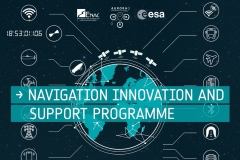The AURORA project is part of the “Creation of an Italian ecosystem for AAM" framework, coordinated and promoted by ENAC, to fill the pre-identified gaps of providing effective and reliable Positioning, Navigation, and Timing (PNT) GNSS based service for the AAM in urban and intra-urban environment, and as such can be considered as part of the AAM national strategy.
AURORA will analyze the peculiar needs of the territories with a focus on the Italian scenarios, along with the opportunities offered by the new and alternative PNT technologies integrated space and ground networks and systems in the context of the UAM in order to:
- Define a PNT Operational and Performance Requirements Document for UAM, identifying navigation requirements, the operational environment and related services and dedicated use cases able to support the definition and application of suitable PNT technical standards to the UAM. Consequently, propose a GNSS scalable architecture that can be implemented within the national UAM mission scenarios for at least the class of vehicles related to the EASA Specific and Certified Category of unmanned vehicles, which will include mid/big size manned systems for human transportation (VTOL) and goods delivery.
- Design a UAM National Research & Development and Certification Distributed Facility so-called “UAM National Test Facility” that shall become the national reference facility for new technology development and certification of PNT devices based on GNSS technologies for UAS.
- Investigate about new emerging PNT technologies for UAM applications and prototype some of the building blocks of above GNSS scalable architecture. Performing laboratory and in-flight demonstrations of their effectiveness using the facilities at the demonstration time into: Rome GNSS lab, Capua airfield and Grottaglie airport, on top of which the UAM National Test Facility will be developed.
AURORA’s project management is in charge of ENAC, the Italian Civil Aviation Authority, with the technical coordination of Telespazio, and the contribution of CIRA – the Italian Aerospace Research Center, DTA - the Aerospace technology district of Puglia region, and the companies: D-Flight (ENAV group), Exprivia, Planetek Italia and Civitanavi Systems.






